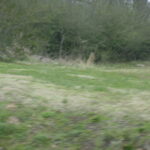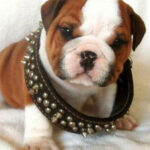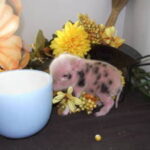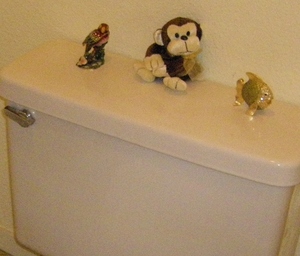Pig pens, like any other animal enclosure, are designed to give each animal sufficient space, shelter, and access to food and water. The exact size of your pen depends on the breed and adult size of the pigs (unless it’s only for young pigs, then based on their maximum size before being moved to a different pen) as well as how many animals you’ll have in the pen. This article will outline the basic considerations for a pig pen for adult pigs that will not be reproducing. If you’re looking for a breeding or farrowing setup, further research will be required to determine the best kind of enclosure.
Determining the type and size of pig pen you need
There are several different kinds of pens people habitually use for pigs, including temporary holding pens made with electric wire and more permanent pens. Here we will be focusing on a permanent pen made to last throughout an animal’s life.
The first consideration is the number of pigs you intend to house in the pen. If you’re unsure, it’s generally a good idea to build a pen with sufficient room for two or three additional animals. The general rule of thumb is to build an 8’x16′ space per animal (16’x16′ for two animals, and so on), though this will vary depending on the animal’s breed and the size they’ll be before they are sold or butchered, if applicable.
Selecting pig pen materials before building
Pens must be made very sturdy to stand up to the wear and tear of keeping pigs in. Even the most docile animals will often use the fence to scratch against, try to reach through the holes to reach interesting things on the other side, and so on. Pigs are exceptionally compact and powerfully-built animals, so the fence has to be set up with their strength in mind. Wooden or metal fence posts work well for these pens, though wood may get chewed on. Metal posts are a little more expensive, but definitely worth the cost when it comes to pigs. Ideally, metal posts should be at least 6′ tall so they can be pounded at least 2′ into the ground.
The fence itself is most often made out of wood, pre-made wire panels (hog panels), or panels of aluminum pipe. Many people who use wooden slats find that they need to protect it with wire mesh to keep the pigs from chewing it to slivers. Pipe panels similar to the ones popularly used for horseback riding arenas are sturdy and resist damage, but they must also be repainted regularly to avoid rusting and are considerably more expensive than hog panels. Hog panels are generally the most popular option for hobbyists and small-scale farmers. These panels are relatively cheap and maintenance-free, only needing replaced if a pig manages to badly damage the panel, and they are very easy to set up by attaching to fence posts with sturdy wire (for metal posts) or a combination of wire and wood staples (for wooden posts). The pens do not have to be very tall, though small holes between slats or wire mesh is essential as pigs have been known to climb over some fences, namely wooden slats.
How to build a simple hog shed for your pig pen
Next, you’ll need some kind of shelter. An ideal hog shed doesn’t need to be very tall (about 4′ to house a 250lb butcher hog) and should have sufficient space for each animal to get completely out of the elements and stretch out. A construction of insulated cinder blocks works well, but can be expensive. A popular construction consists of a double layer of plywood with fiberglass insulation or bales of straw between the layers, though wooden structures will need to be lined with a sturdy wire mesh to discourage chewing.
Get the right feeder for your pigs
If given half a chance, pigs will root through their food and make quite a mess with it. This is both a waste of food and a potential health hazard as the food can then get moldy and/or attract additional insects to the pen. Top-filling automatic feeders work great in avoiding this problem. These feeders contain large amounts of food (depending on the size of the feeder, generally anywhere from 50lb on up) and allow a small amount to be available at a time in a small opening below. This opening is of a size that a pig can comfortable eat their food, but don’t have room to root around in it. Having an automatic feeder ensures that the pigs always have access to clean, dry food.
Keep fresh, clean water in the pig pen at all times
Automatic waterers are also an excellent addition to the pen. These are relatively inexpensive, about $15-$20 for a good one, but they do require a garden hose. The waterer itself is a metal spout that is activated by a pig biting down on a metal plunger, which then squirts water into the pig’s mouth. This will ensure that the pig always has fresh water to drink and keep them from trying to wallow in their drinking water.
Prevent overheating and sunburn with a wallow
Pigs need to have access to a wallow. Most often, this is just a patch of ground kept well-watered so they have some mud to roll in, helping them to keep cool in warm weather. If a wallow is not an option, lots of shade will be required and they may have to be misted down regularly to prevent overheating. Bear in mind that light-colored pigs also sunburn easily and will need additional care to prevent these hazardous burns.
Food, water, shelter, space, and a way to keep cool. These are the essentials for all pigs, regardless of size, breed, or purpose. Basic guidelines can set you on the road to building the ideal pen for your pets or livestock, though research on specific breed requirements is always recommended.







